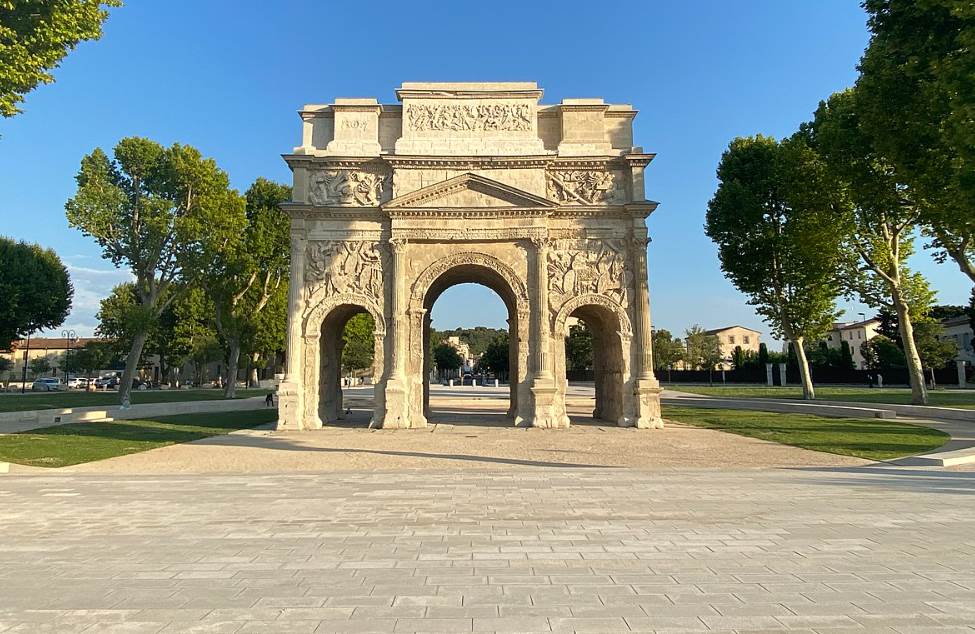A relatively small town in the southeastern part of France is home to some of the most fascinating ancient Roman monuments in Europe.
The Romans invented triumphal arches and constructed them all across the Roman Empire. They did the same regarding temples, Roman Bathhouses, and Roman Amphitheaters.
Let’s take a closer look at some of the most interesting facts about the Triumphal Arch of Orange, an amazing arch in France that has some fascinating stories to tell.
1. It’s located just north of the historical heart of Orange
The Triumphal Arch of Orange is one of the dozens of arches constructed by the Romans that still stand today.
It’s located in the relatively small town of Orange which is situated in the Vaucluse department of the Provence-Alpes-Côte d’Azur region in southeastern France.
The border of the Vaucluse and the Gard Departments is marked by the Rhône River which flows just west of Orange.
The larger city of Avignon is situated about 21 kilometers (13 miles) south of Orange. The much bigger cities of Montpellier and Marseille aren’t too far to the southwest and southeast respectively as well.
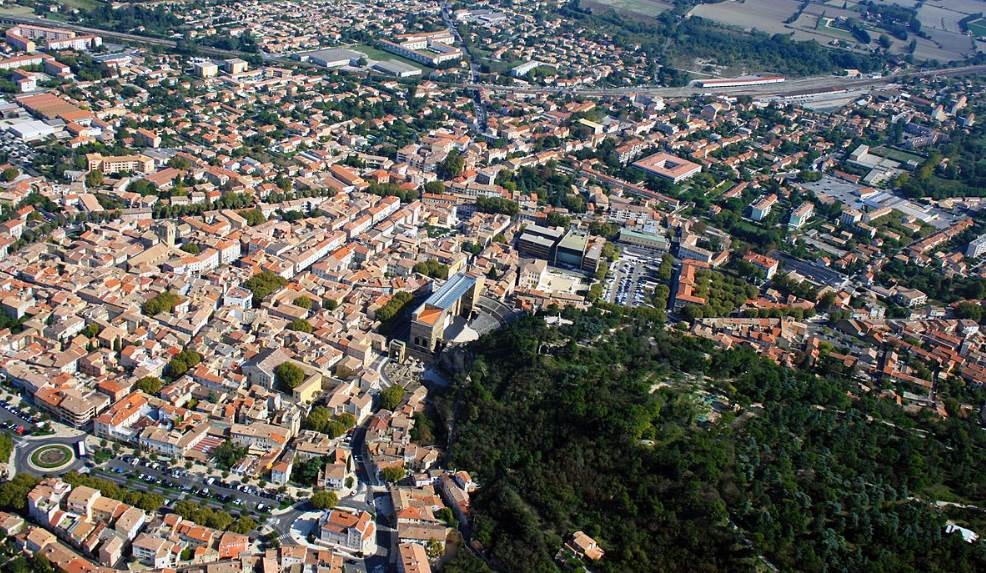
2. It was probably built during the reign of Augustus
The Roman settlement that became the modern-day town of Orange was founded in the year 35 B.C. as “Arausio” by veterans of the second legion, also known as the “Legio II Augusta.”
As its name suggests, this legion was active during the reign of the first Roman Emperor Augustus, although it was established in the late Roman Republic.
It’s assumed that the Triumphal Arch of Orange was constructed in honor of these veterans who were part of the Roman Conquest of Gaul. The name of the settlement, Arausio, was derived from the local Celtic water god.
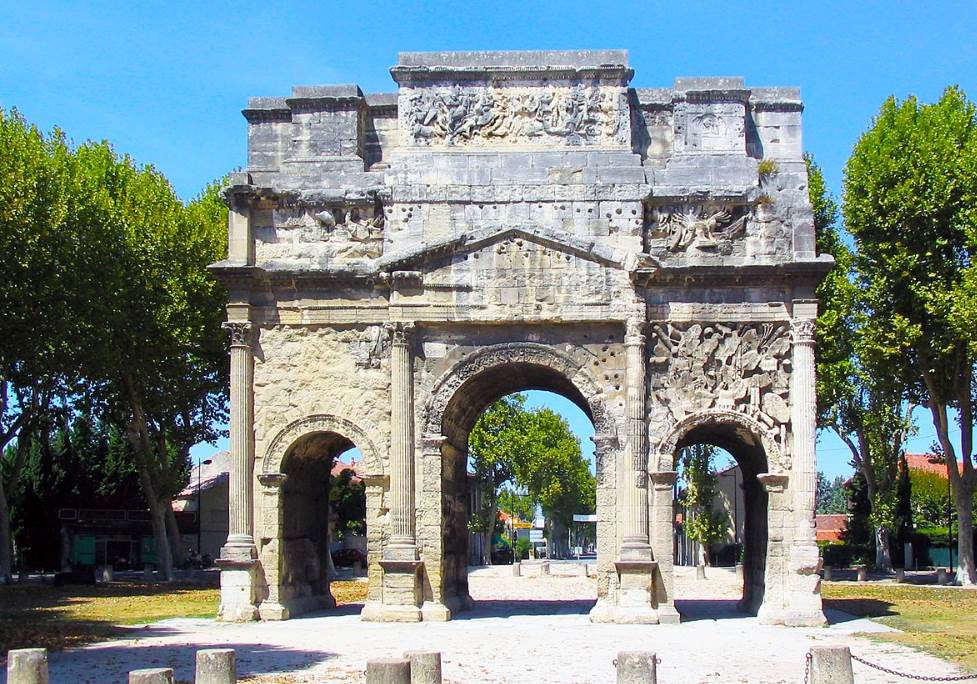
3. It was probably built during the reign of Augustus
The arch was constructed alongside the “Via Agrippa,” a collection of Roman roads in Roman Gaul established by Marcus Agrippa (63-12 B.C.), the person architect of Augustus.
Yes, you can see Agrippa’s initials on the portico of the Pantheon n Rome because he designed the original version of this monumental building.
The Via Agrippa eventually expanded to a network of roads with a length of 21,000 kilometers (13,000 miles) in Gaul.
The road in modern-day Orange went to Lyon, the second-largest city in France that is located directly to the north.
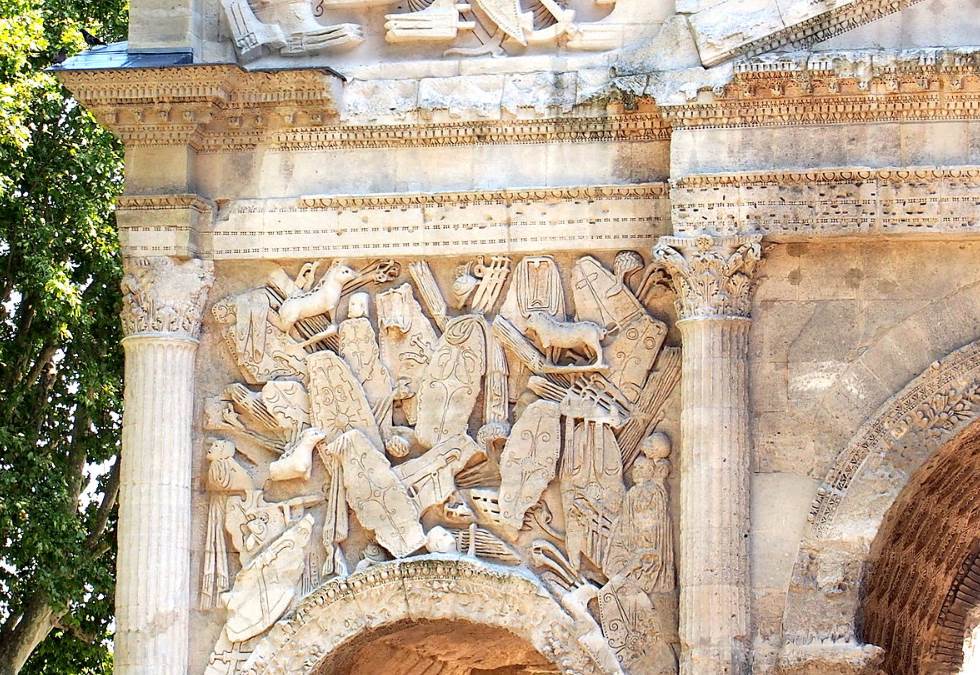
4. The arch is not the only ancient Roman monument in this town
Arausio wasn’t the biggest city outside of Rome, but far from being the smallest in the Roman Empire as well. It covered an area of about 70 hectares (170 acres) which isn’t small by any means.
Its official name in Roman times was “Colonia Julia Firma Secundanorum Arausio” or “the Julian colony of Arausio established by the soldiers of the Second Legion.”
This also means that numerous other structures were constructed here to entertain the people. Apart from a Forum and civic buildings, it also featured a Roman Theater.
The Roman Theater of Orange was constructed around the same time in the early 1st century A.D. and has been remarkably well preserved.
It has been preserved so well that it’s still used for festivals and performances today, quite astonishing for a building that was constructed about 2,000 years ago.

5. How big is the Triumphal Arch of Orange?
The triumphal arch has also been fairly well preserved considering its age and is much larger than it initially appears to be.
It has the following dimensions:
- Width: 19.57 meters (64.2 feet)
- Depth: 8.4 meters wide (27.55 feet)
- Height: 19.21 meters (63.02 feet)
The arch is decorated with Corinthian columns on all sides and panel reliefs that depict various battle scenes between Roman and Gallic warriors.
Tiberius, the second Roman emperor, later added inscriptions and reliefs commemorating the victories of Roman general Germanicus over German tribes in the Rhineland.

6. The structure served as a model for several other famous arches
While several details differ, the general appearance of the Triumphal Arch of Orange and some that were constructed in Rome are strikingly similar.
That’s because this 1st-century arch served as the model for arches that were constructed later, including the Arch of Constantine the Great, located right next to the Colosseum, and the Arch of Septimius Severus, located on the Roman Forum.
These two arches were constructed in the early 4th and early 3rd centuries respectively and are famous structures in Rome.

7. It was part of the city’s walls during the Middle Ages and got damaged
Building this arch must have been a huge endeavor, especially considering that it was constructed without mortar using perfectly cut limestone blocks.
To make good use of this ancient monument, the people who lived here during the Middle Ages simply incorporated it into the city walls of Orange.
They couldn’t care less about the architectural and artistic value of the arch and its reliefs. This notion is emphasized by the fact that archers used it to practice.
The evidence that medieval crossbowmen used it as a target to practice on is still visible in the form of holes.
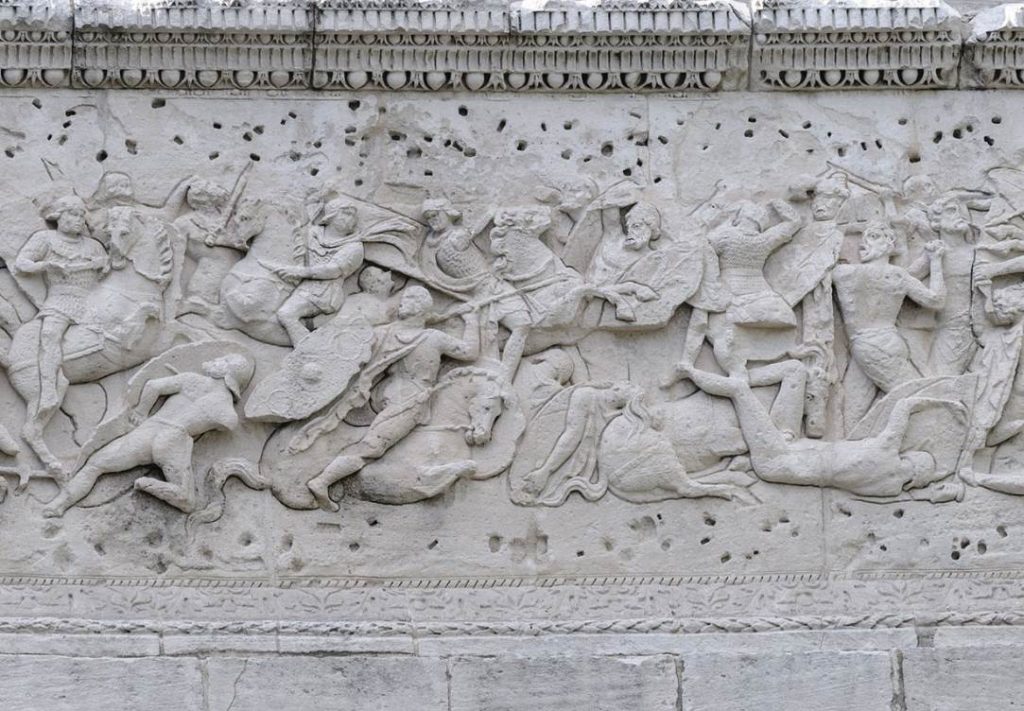
8. It has been a UNESCO World Heritage site since the early 1980s
It’s hard to deny the fact that a structure constructed 2 millennia ago has a tremendous historic value. That’s why it was inscribed as a UNESCO World Heritage site in 1981.
It shares this inscription with the Roman Theater of Orange, a building that was constructed between 10 and 25 A.D., and its surroundings in this remarkable town in southern France.
